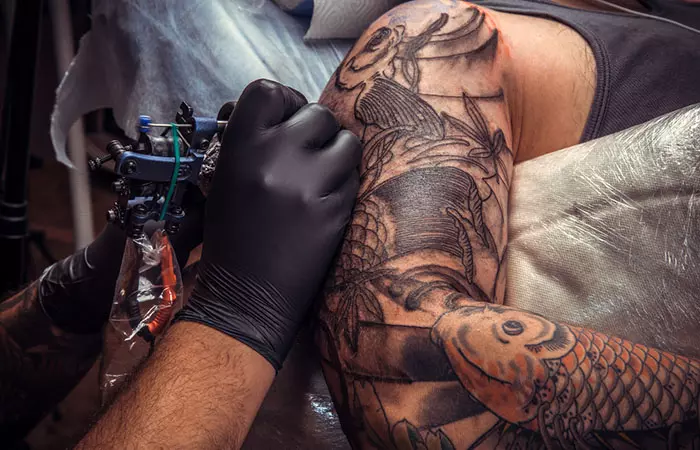The Art of Transformation: Mastering the Cover-Up Tattoo Process
Cover-up tattoos offer a unique opportunity to transform old or unwanted ink into fresh, vibrant designs. This process involves careful planning, creative artistry, and technical precision. Dive into the world of cover-up tattoos and explore artists’ techniques and strategies to give new life to existing tattoos, turning past mistakes or faded memories into masterpieces.

Assessing the Existing Tattoo:
The first step in the cover-up process involves a thorough assessment of the existing tattoo. The artist evaluates factors such as the size, color, and age of the old tattoo, as well as the depth and quality of the ink. This assessment helps determine the best approach for the cover-up and identifies any potential challenges that may arise during the process.
Consultation and Design Planning:
During the consultation phase, the artist and client discuss the desired outcome for the cover-up tattoo. This includes selecting a new design that aligns with the client’s vision while effectively covering the old tattoo. The artist may suggest specific design elements, styles, or color schemes that will work best to obscure the original ink and create a cohesive, visually appealing result.
Choosing the Right Colors:
Color selection is a critical aspect of cover-up tattoos. Darker colors, such as blacks, blues, and purples, are often used to mask the existing tattoo. However, strategic use of lighter colors and shading can also create depth and dimension. The artist carefully selects colors that will effectively cover the old ink while enhancing the new design.
Incorporating Design Elements:
To ensure a successful cover-up, artists often incorporate specific design elements that distract the eye from the old tattoo. These elements can include bold lines, intricate patterns, and detailed imagery. By using these techniques, the artist can draw attention to the new design while effectively camouflaging the underlying tattoo.
Technical Precision and Technique:

Executing a cover-up tattoo requires technical precision and mastery of various tattooing techniques. Artists must apply the new ink carefully to the existing tattoo, ensuring that the new design fully covers the old one without causing excessive damage to the skin. Techniques such as layering, shading, and color blending are essential to achieve a seamless result.
Managing Client Expectations:
Setting realistic expectations is crucial in the cover-up process. The artist must communicate openly with the client about the limitations and possibilities of the cover-up tattoo. In some cases, multiple sessions may be required to achieve the desired result, and some aspects of the old tattoo may still be faintly visible, depending on factors such as the original ink’s depth and color.
Aftercare and Healing:
Proper aftercare is essential for the healing and longevity of the cover-up tattoo. The artist provides detailed aftercare instructions to the client, emphasizing the importance of keeping the tattoo clean, moisturized, and protected from excessive sun exposure. Following these guidelines helps ensure the new tattoo heals well and retains its vibrant appearance.



